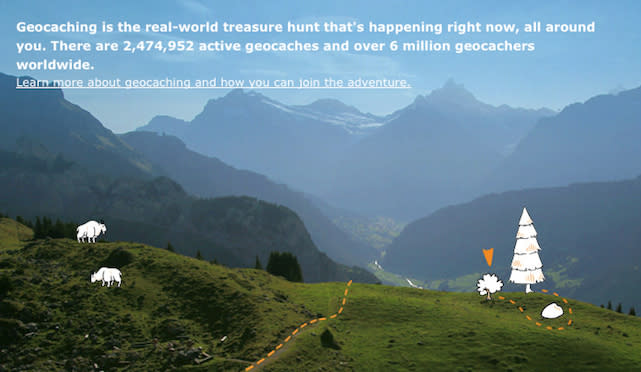Geocaching: A fun and high-tech way for kids to learn

It's back to school time, which of course means that the kiddos are gearing up to fill their brains with all sorts of new things. Parents who are looking for ways to keep the kids entertained -- yet still learning -- on weekends, after school and on vacations need look no further than their iPhones and the Geocaching app (US$9.99).
Geocaching is all about trying to find containers called caches that have been craftily hidden by others. Some of those containers only hold logbooks for you to sign, while others contain swap items. When someone hides a cache, they give it a name, determine the precise location of the cache using the GPS receiver in their iPhone, and then upload that information to the Geocaching.com website.
Other geocachers in an area can attempt to find the hidden cache by using the app to determine what caches are nearby, then looking at maps to determine the rough area where the cache is hidden. It sounds simple, but many caches are truly hidden in plain site and are ridiculously hard to find. Once you've finally found a cache, you sign the logbook, add a swap item (if applicable) and take one with you, then upload your find to the Geocaching.com website.
If you're not sure if geocaching sounds like a lot of fun, you can always try out the free Geocaching Intro app, which "guides you through the adventure of finding your first few geocaches."
So, it sounds like a big game, right? Well, your kids can end up learning a lot by playing this "game":
Map reading: To find their way to a nearby geocache, your kids will need to figure out how to read a map. Figuring out where they currently are and how to get to a cache isn't always as easy as walking in a straight line, so they'll have to be able to "see" geological features like streams, lakes, trees, marshes, cliffs and more, and try to avoid them. Oh, and you can also teach them about things like longitude and latitude while you're at it.
GPS and satellites: Your kids are going to get their current position from the Global Positioning System (GPS) constellation of satellites. What better way to get them interested in what makes GPS tick, how satellites stay in orbit, how satellites are launched, and more than to tie geocaching and GPS together?
Geography: Caches are hidden all over the world. Have a family vacation planned to somewhere exotic? Have the kids do some pre-trip planning on caches to find that are within a reasonable walk of your stopping points for the night.
Biology: Many caches are located in parks, fields and wooded areas, although you'll find a lot of them in urban areas, too. But this is a perfect opportunity to have some fun with biology. How many different species of birds can your kids find? What insects are common in the area? Are there any poisonous snakes that might be hiding near the cache? What kind of trees, grasses, and other plants are in the area?
Camouflage: Have an artsy kid or two? Have them look into the art of camouflage, how to make something disappear into its surroundings. They can help create a cache, then find a place to hide it and get the coordinates so that it can be added to almost 2.5 million active caches.
The list goes on and on, and is limited only by the imagination of the parent -- or educator -- who uses geocaching as a springboard for getting kids interested in a variety of subjects.

